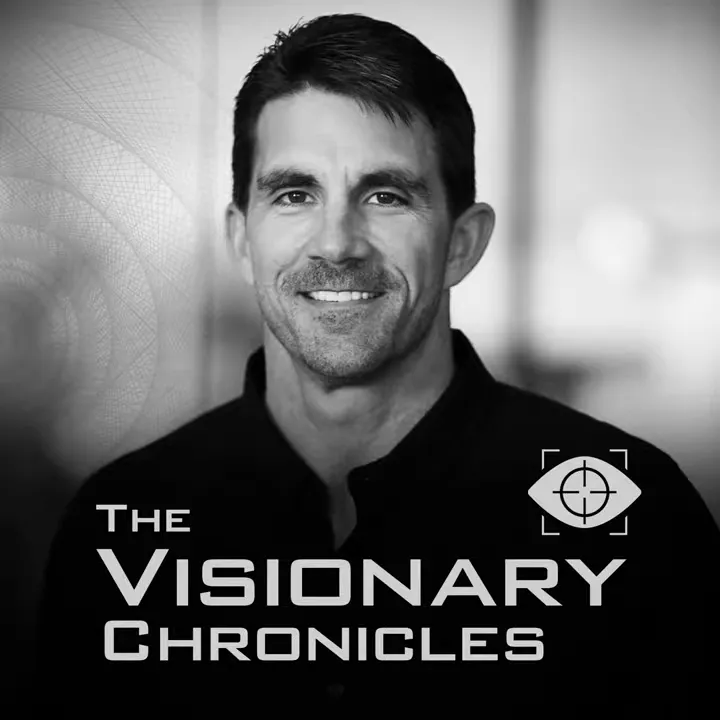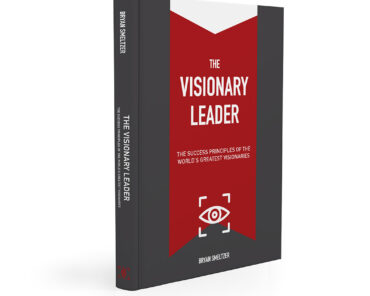By Bryan Smeltzer
Visionary Leadership: Implementing Long-Term Strategy in a Short-Term Culture
Visionary Leadership starts with a choice: prioritize compound, generational value or chase the next immediate metric. In a culture addicted to instant results—quarterly earnings, viral social moments, and real-time feedback—building something that lasts requires deliberate systems, courage, and patient execution. Below is a practical playbook for leaders who want to turn long-term vision into measurable, sustained advantage.
Table of Contents
- Why Visionary Leadership Matters Today
- The Hidden Costs of Short-Termism
- The Strategic Advantage of Long-Term Thinking
- Five Pillars to Implement Visionary Leadership
- Real-World Example: A Shift to Long-Term Vision
- Practical Steps: A 90-Day Action Plan for Visionary Leadership
- Maintaining Strategic Discipline Over Years
- Key Takeaways
- Frequently Asked Questions
- Final Thought
Why Visionary Leadership Matters Today
Businesses are pressured to deliver short-term wins. Public companies face quarterly reporting, investors demand rapid exits, and social media amplifies every misstep. That environment pushes most leaders into optimization mode. Visionary Leadership rejects that narrow horizon and builds capabilities that compound over years. Companies led with a genuine long-term orientation consistently outperform peers because their investments, culture, and market positions accumulate advantage.

The Hidden Costs of Short-Termism
- Systematic underinvestment in R&D and new capabilities
- Talent drain as top employees seek meaningful, mission-driven work
- Vulnerability to disruption by long-term competitors
- Loss of organizational identity beyond financial metrics
These costs are subtle at first but catastrophic over time. Short-termism trades enduring differentiation for temporary optimization.
The Strategic Advantage of Long-Term Thinking
Visionary Leadership creates advantages few competitors are willing to sacrifice near term to match. Long-term orientation enables compound effects across strategy, culture, and product. It reduces competitive pressure, attracts exceptional talent, and enables true innovation—efforts that rarely pay off immediately but transform industries over years.
Five Pillars to Implement Visionary Leadership
Implementing a long-term strategy requires systematic changes across five pillars. These are practical, repeatable levers you can use regardless of industry.
1. Governance and Stakeholder Management
- Create governance structures that protect long-term interests from short-term pressure
- Recruit board members and stakeholders committed to patient capital
- Set clear time-horizon expectations and accountability independent of quarterly reviews
2. Resource Allocation and Financial Discipline
- Use two-bucket budgeting: one for operations, one for strategic investments
- Maintain cash reserves so you can seize opportunities during downturns
- Make multi-year commitments to strategic projects and treat them as sacred cows
3. Measurement and Accountability Systems
- Measure leading indicators aligned with strategic goals, not only quarterly revenue
- Build a multi-year strategic dashboard reviewed regularly
- Link compensation and equity vesting to long-term milestones and strategic outcomes
4. Organizational Culture and Leadership Development
- Promote leaders who demonstrate strategic thinking and long-term orientation
- Build psychological safety and tolerance for intelligent failure
- Embed strategic thinking into hiring, onboarding, and leadership development
5. Competitive Positioning and External Communications
- Develop competitive moats that protect long-term investments, such as network effects or switching costs
- Choose when to signal goals publicly and when to maintain secrecy
- Make bold commitments to shape market expectations and monitor competitor responses
Real-World Example: A Shift to Long-Term Vision

Consider a major technology transformation where leadership redefined mission, prioritized long-term market share over short-term profits, and restructured metrics and compensation to reward strategic outcomes. Multi-billion dollar investments were made before profitability, metrics shifted from legacy licensing to adoption and cloud consumption, and culture changed from know-it-all to learn-it-all. A decade of disciplined investment delivered outsized results.
Practical Steps: A 90-Day Action Plan for Visionary Leadership
Use this 90-day roadmap to move from intent to launch. These steps are designed to create momentum and establish systems you can sustain.
Days 1–30: Assess
- Audit governance, budgets, and measurement systems for short-term bias
- Identify strategic priorities that require multi-year focus
- Map talent and capability gaps for long-term initiatives
Days 31–60: Design
- Create two-bucket budgets and a multi-year strategic dashboard
- Define leading indicators and align executive incentives to long-term milestones
- Design culture interventions: storytelling, innovation time, and development programs
Days 61–90: Launch
- Secure board and stakeholder commitments to protected strategic investments
- Begin pilot investments with clear review cadence and multi-year funding
- Communicate changes broadly and start the cadence of quarterly strategic reviews
Maintaining Strategic Discipline Over Years
Launching the strategy is the easy part; sustaining it is the hard work. Maintain discipline with quarterly strategic reviews, annual retreats, continuous leadership development, and regular communication. Expect skepticism and pressure to revert to short-term behavior. Personal discipline from leaders is essential: the courage to invest, to persist when results lag, and to believe in futures others do not yet see.
Key Takeaways
- Visionary Leadership requires systematic changes across governance, resource allocation, measurement, culture, and competitive positioning
- Protect strategic investments from annual budget volatility and align incentives with long-term outcomes
- Build a pipeline of innovation with an 8–10 year horizon and give teams the psychological safety to experiment
- Courage and persistence separate short-term managers from long-term visionaries
Frequently Asked Questions
How do I start shifting my company from short-term to long-term focus?
Begin with an assessment of governance, budgeting, and measurement systems. Establish a separate strategic investment budget, recruit or brief board members on patient capital, and introduce leading indicators that track strategic progress rather than only quarterly results.
What metrics should I use to measure long-term strategy?
Use a mix of leading indicators such as patent applications, revenue from new products, strategic partnerships, adoption rates, and innovation culture scores. Combine these with a multi-year strategic dashboard and tie executive incentives to milestone achievement.
How can I protect long-term investments from budget cuts?
Allocate strategic investments into a separate budget bucket and treat key initiatives as sacred cows with multi-year funding commitments. Secure stakeholder buy-in and create governance rules that require multi-stakeholder approval to reallocate those funds.
How do I change a culture that punishes failure?
Shift hiring, onboarding, and promotion criteria to reward strategic thinking and curiosity. Create psychological safety by celebrating intelligent failure, establishing innovation time, and telling stories that reinforce strategic patience.
Final Thought
Visionary Leadership is a discipline. It is a systematic approach to governance, resourcing, measurement, culture, and positioning. Think long, act decisively, and build the structures that let your organization survive short-term storms while creating long-term, meaningful value.
The Visionary Leader eBook! |
|
Get your eBook for Review on Amazon! |
| Click me |
This article was created from the video Visionary Leadership | Implementing Long-Term Strategy in a Short-Term Culture with the help of AI.




